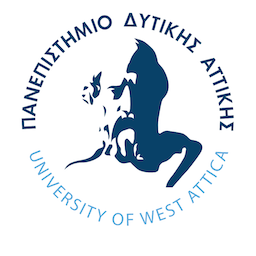Learning Outcomes
This course aims to provide a contemporary view of sound production and related audio professions that recognizes the dramatic and ongoing changes in the recording and media industry and research in recent years. Students will have the opportunity to:
- build an individual body of technical and creative skills from a core program of artistic and technical development.
- design and manipulate sound and music for image, interactive environments and installations, performing arts among others.
- make use of various techniques such as sound recording, and sound synthesis techniques.
- experiment with alternative forms of producing sound events through interactive technology.
- learn the theory about sound and the history of music with technology.
- meet artists, scientists, and currents of contemporary music and other art forms.
- acquire skills and learn new tools through the process of research and experimentation.
- Students will learn to create and manipulate sound and music both for images such as film, video art, video games, and for interactive installations, performing arts among others, making use of various techniques such as sound recording, and sound synthesis techniques. They will also experiment with alternative forms of producing sound events through interactive technology.
- They will learn the theory about sound and music with technology.
- They will meet artists, scientists and currents of contemporary music both in sound and in other art forms.
- In this course students will acquire skills and learn new tools through the process of research and experimentation.
- They will learn the proper handling of tools for sound recording and synthesis, using software and hardware.
- They will be trained in the analysis, creation and presentation of projects.
General Competences
- Applying knowledge to practice
- Search, analyze and synthesize data and information, using the necessary technologies
- Adaptation to new situations
- Decision making
- Independent work / Teamwork
- Working in an international / interdisciplinary environment
- Project planning and management
- Exercising criticism and self-criticism
- Promoting free, creative and inductive thinking
- Ability to create sound for image, installations, performance
Course Outline
Theory
- Sound, vibration and waveform
- Psychoacoustics
- Movements
- Introduction to the Sound Art and Computer Music
- Types of microphones and recording techniques
- placement of microphones in the field
- Basic audio kit overview
- pickup patterns
- mixer settings.
- Sound engineering and room acoustics practices (boom use, microphone leads, solving problems caused by the use of microphone devices. Use of windscreens, deadcats and wind management.
- What is Roomtone and how it improves field recording.
- Music for film. Dubbing, voiceover, sound effects, Wild sounds and wild tracks and their importance in sound recording for a film
- File management
Lab
- Audio editing and synthesis programs
- Introduction to post-production. Working with SFX and SFX Libraries. Create Foley SFX
- Dialogue and automatic dialogue replacement in post-production (ADR/Dialogue replacement)
- Sound design
- Music and film score composition. Dubbing, voice over, sound effects, Wild sounds and wild tracks and their importance in sound recording for a film.
- Sound synthesis techniques
- MIDI and OSC communication protocols
- Ιmmersive sound
- Interactive sound installations
- Sound-music for performative arts
*Audacity, Reaper, Logic, Cubase, Protools, SuperCollider, Wwise, Fmod, Unreal Engine
RECOMMENDED BIBLIOGRAPHY
- Chion Michel, Ο Ήχος Στον Κινηματογράφο, Πατάκης, 2010
- Παλατσιώλης Τασης, Ηχοληψία (Πρώτος Τόμος), Σχολή Σταυράκου, 1994
- Πετρίδης Γιάννης, Ζουγρής Κώστας, Soundtracks Ο Ήχος Της Οθόνης, Εκδόσεις Ανατολικός, 2006
- Zettl Herbert, Εφαρμοσμένη Αισθητική Στην Τηλεόραση Και Τον Κινηματογράφο Εικόνα Ήχος Κίνηση, Ελλην, 1999
- Stanley R. Alten, Παραγωγή Και Επεξεργασία Ήχου Με Ηλεκτρονικά Μέσα, Ελλην, 2004
- Jay Rose, Producing Great Sound For Film And Video Expert Tips From Preproduction To Final Mix, Routledge, 2015
- Chion, Michel, Audio–Vision – Sound on Screen, Columbia University Press, 1994
- Cope, David, The Algorithmic Composer.,Madison, Wis: A-R Editions, 2000
- Collins, Karen, Game Sound: An Introduction to the History, Theory, and Practice of Video Game Music and Sound Design, The MIT Press, 2008
- David Neumeyer, Diegetic/Nondiegetic: A Theoretical Model, Music and the Moving Image, Vol. 2, No. 1 (Spring), pp. 26-39 Published by: University of Illinois Press, 2009
- Farnell, Andy, Designing Sound, Cambridge, Mass: The MIT Press 2010
- Gutowitz, Howard, ed,. Cellular Automata: Theory and Experiment, 1 edition, Cambridge, Mass:The MIT Press, 1991
- Holman, Tomlinson, Sound for film and television / Tomlinson Holman, – 3rd ed, Focal Press, Oxford, UK. SBN 978-0-240-81330-1 (alk. paper), 2010
- Husbands, Phil, Peter Copley, Alice Eldridge, and James Mandelis, An Introduction to Evolutionary Computing for Musicians, In Evolutionary Computer Music, 1–27. Springer, London, 2010, https://doi.org/10.1007/978-1-84628-600-1_1
- Miranda, Eduardo R., and John Al Biles, Evolutionary Computer Music, Springer Science & Business Media, 2007
- Nierhaus, Gerhard, Algorithmic Composition: Paradigms of Automated Music Generation. 2009
- Course notes
- Online resources


